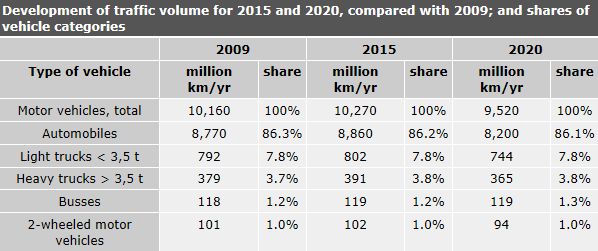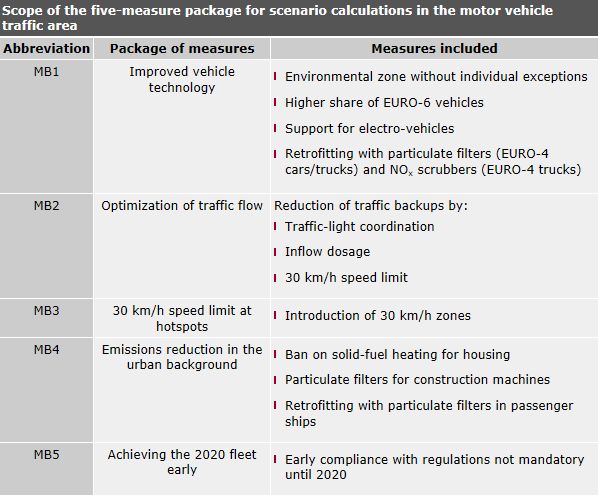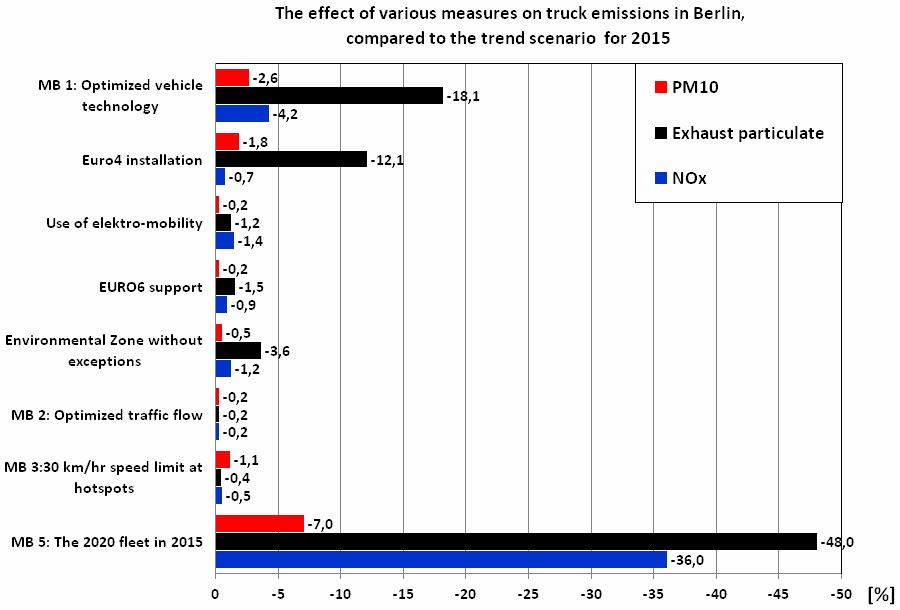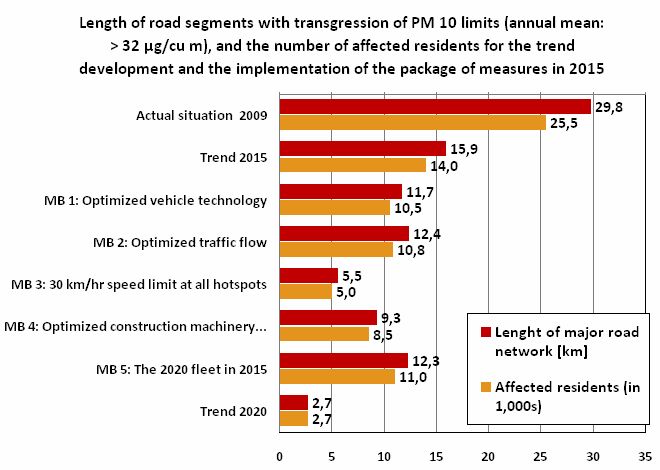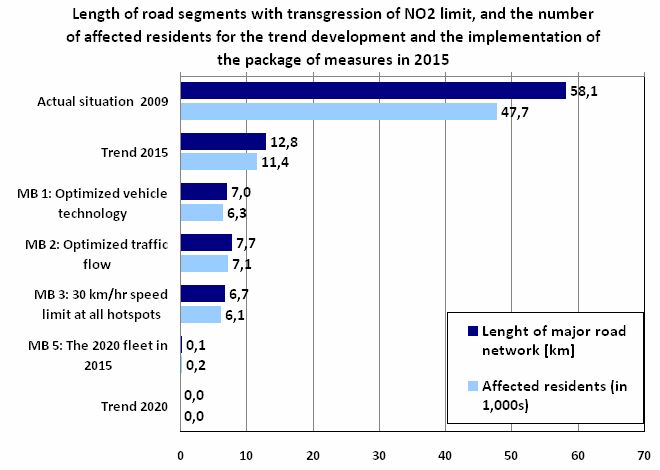Reason
In the context of the new Clean Air Plan for 2011-2017 scenarios were calculated on the air-quaility effect of selected measures. The maps of air pollution on major roads drafted for the Clean Air Plan are to be made accessible online, so that it will be possible to access any section of the main road network for traffic volume, emissions, and air pollution in status quo, and taking into account the effects of certain packages of measures.
As exhaustive documentation of all essential contents of the new Clean Air Plan is available on the Internet, so that we will here indicate only several of the most important contexts.
Air Quality
Air quality has improved considerably in Berlin in recent years; however, especially during unfavourable meteorological situations, air pollution conditions may occur which endanger the health of Berlin’s people.
In Berlin, motor vehicle traffic has for some years been a major cause not only of noise pollution (see also Maps 07.05.1 and 2 Strategic Noise Maps, Road Traffic (2008 Edition)), but also of air pollution in important problem areas, especially since the shares of other air pollution sources in Berlin have been considerably reduced. As a result, many ambitious European air quality levels have already been met in Berlin (cf. also Map 03.12 Long-Term Development of Air Quality).
Nonetheless, for some pollutants, the ascertained concentration values in the near-ground air are still above the established limits for certain pollutants, at least some of the time. As a result, supplemental measures will have to be taken in future as well, in order to be able to stay below these limits permanently, as legally required under the Federal Immission Law (§ 47 BImSchG) and the § 27 of the 39th Federal Immission Ordinance (BImSchV).
Immissions prognoses, 2015-2020, given no additional measures (trend)
For clean air planning, it is first of all necessary to know what the future development of air quality without additional measures will be. For only on this basis can additional measures be determined in the necessary scale, which will be appropriate to the source, proportional and effective. By 2015, according to the plan, it was to become mandatory to comply with the nitrogen dioxide limit, even with a deadline extension, and 2020 was seen as the long-term perspective. While the clean air plan incorporates all relevant source groups, with an analysis of causes, a trend prognosis and the investigation of possible measures, the cartographic statements shown here concentrate on the main sources of near-ground air pollution, motor vehicle traffic.
For the development of the volume of motor vehicle traffic, the Berlin Overall Traffic Prognosis 2025 was adapted for the prognosis years in the Clean Air Plan. This included adaptation of the data on demographic development, employment data, school attendance, retail space and infrastructural change, such as the state of parking space management. For the development of traffic costs, corrected for inflation, no increase was assumed.
For the prognosis year 2015, the following developments were taken into account:
- The opening of the Berlin Brandenburg airport in Schönefeld
- The closing of Tegel Airport
- The construction of new road connections, such as the South-east Connector (Spree crossing), or the expansion of the A-10 motorway in Northern Berlin
- Changes in traffic organization and street deconstruction (e.g. the deconstruction of the eastern segment of Invalidenstraße, or of Adlergestell.
For the prognosis year 2020, the infrastructural change included in the model was the construction of the extension of the A-100 motorway from the Neukölln interchange to Treptow.
The traffic volumes foreseen for 2015 and 2020 are shown in Table 1, broken down by vehicle category.
The results of these trend calculations of the emissions and immissions of motor vehicle traffic at various times of the year, calculated on the basis of the mentioned assumptions and the traffic count carried out in 2009, are shown in separate Environmental Atlas maps, 3.11.1 Traffic Related Air Pollution, and 03.11.2 Traffic Related Air Pollution by NO2 and PM10.

